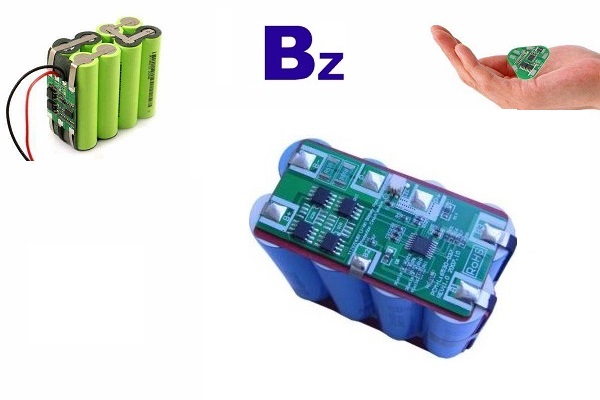Generally, the battery has a protection circuit board, and the protection circuit board is also used for the safety of the battery. But different types of battery protection boards work differently. For overcharging, overdischarging, overcurrent, and short-circuit protection of lithium batteries, it is important to design protection circuit board in the battery pack to protect the lithium battery.

Does the lithium battery need protection?
The reason why lithium batteries (Rechargeable) need protection is determined by its own characteristics. Because the material of the lithium battery itself can not be overcharged, over-discharged, over-current, short-circuited and ultra-high temperature charge and discharge, the lithium battery assembly will always follow an exquisite protection board and a current fuse.
The protection function of the lithium battery is usually completed by the protection circuit board and the current device such as the PTC. The protection board is composed of electronic circuits, and the voltage of the battery core and the charging and discharging circuit are accurately monitored at -40 ° C to +85 ° C environment. Current, timely control of the current circuit on and off; PTC in the high temperature environment to prevent battery damage.
The function of the protection board is mainly to protect the cell of the rechargeable lithium battery, maintain the safety and stability of the battery during charging and discharging, and play an important role in the performance of the entire battery circuit system.
The main function of the lithium battery protection circuit board
1) Overcharge protection function:
The overcharge protection function prohibits the charger from continuing to charge when a certain voltage is reached. That is, the MOS tube that controls the overcharge is brought into an off state, and charging is stopped.
2) Over-discharge protection function:
The overdischarge protection function stops discharging the load when the battery voltage becomes low. The MOS tube that controls the over-discharge is put into the off state, and is prohibited from discharging. This process is exactly the opposite of the action when overcharge detection.
3) Overcurrent protection function:
The overcurrent protection function stops the discharge of the load when a large current is consumed. The purpose of this function is to protect the battery and the MOS tube and ensure the safety of the battery under working conditions. After the overcurrent detection, the lithium battery will return to the normal state after being separated from the load, and can be recharged or discharged.
The meaning of lithium battery protection circuit board
We all know that lithium batteries are not just made up of a single battery. In addition to some basic components, some components are added, but they also occupy an important position in lithium batteries. That is the lithium battery protection circuit board, the word as the name suggests is to protect the lithium battery.
Compared with traditional lead-acid batteries and nickel-metal hydride batteries, lithium batteries have excellent performance, long life and environmental protection. But its stability is not as good as traditional batteries. In other words, security issues have been a major problem with high-performance batteries. Lithium batteries are like this, although the performance is very good, but the safety issue has always been a big problem that people have solved. Once a lithium battery is short-circuited, it will ignite and explode, so the accident it caused cannot be underestimated.
In summary, in order to maximize the safety, life and performance of your lithium battery, you need an accessory to ensure the short circuit of the lithium battery and overcharge and over discharge. The three basic functions of the lithium battery protection board are Short circuit protection, overcharge protection and over discharge protection. So when it comes to this, everyone can understand how much the lithium battery protection board means to the lithium battery! Therefore, the two are complementary to each other and are indispensable!



